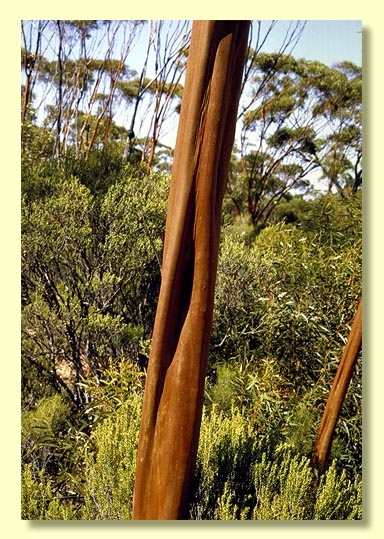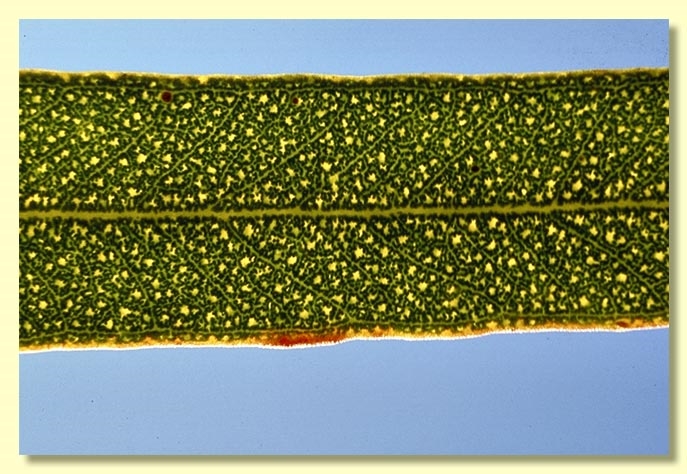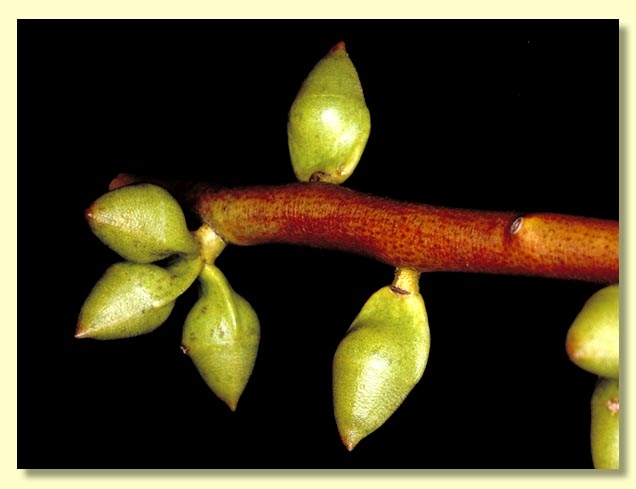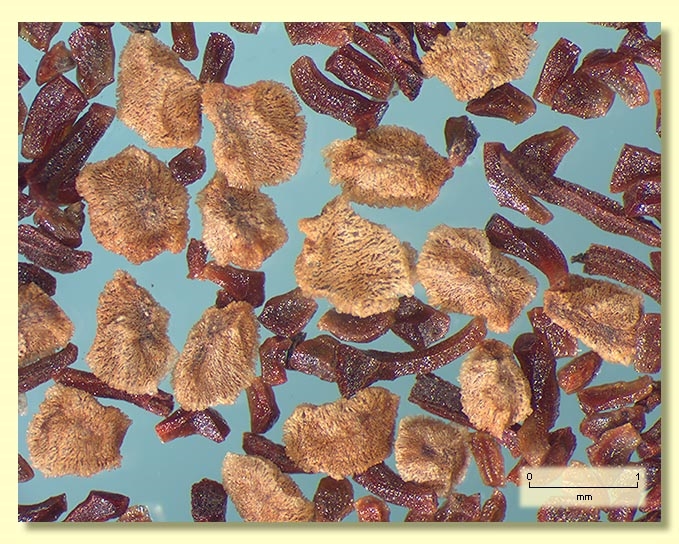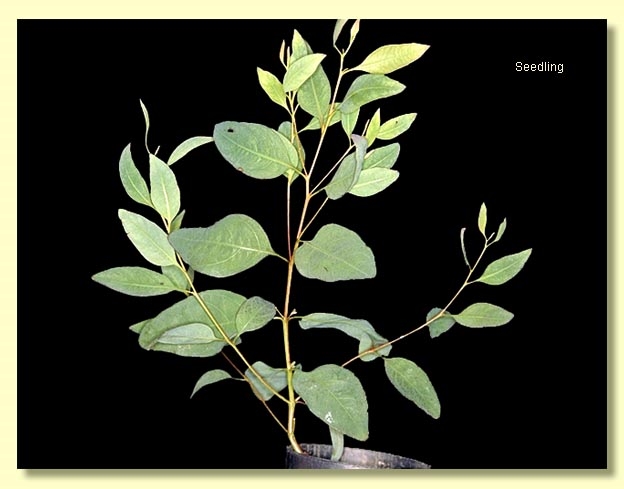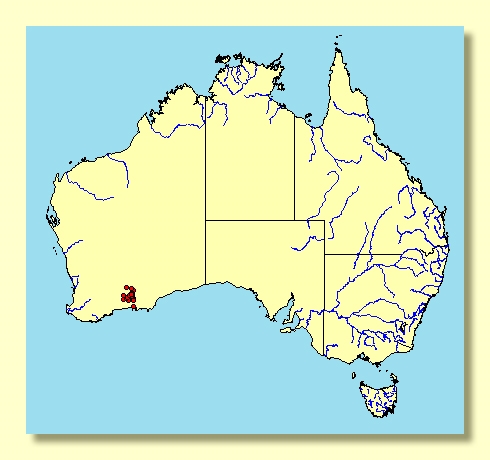Euclid - Online edition
Eucalyptus diptera
Eucalyptus | Symphyomyrtus | Bisectae | Glandulosae | Contortae
T: Esperance, W.A., Oct. 1903, C.Andrews s.n.; holo: PERTH; iso: NSW.
Bark smooth throughout, with oily sheen, greenish grey to bronze, coppery or brown.
Branchlets with dark oil glands in the pith.
Juvenile growth (coppice or field seedlings to 50 cm): stems rounded in cross-section; leaves always petiolate, alternate, broadly lanceolate, 5–8 cm long, 0.7–2.5 cm wide, dull, bluish-green at lower nodes, soon green; youngest stems and early leaves slightly scabrid.
Adult leaves alternate, petioles 0.7–1.7 cm long; blade linear to narrowly lanceolate, 6–12(12.2) cm long, 0.7–2 cm wide, base tapering to petiole, margin entire, apex pointed, glossy, green, side-veins at an acute or wider angle to midrib, reticulation moderate to dense and broken, intramarginal vein fairly close to margin, oil glands irregularly-shaped, island.
Inflorescence axillary unbranched, peduncles absent or stout, 0–0.1 cm long, buds 3 per umbel, sessile or pedicellate, pedicels 0–0.2 cm long, flattened. Mature buds ovoid (0.8–1.5 cm long, 0.6–1.1 cm wide) with 2 wings extending from the flattened pedicel to or almost to the join of hypanthium and operculum, scar present, operculum conical, stamens inflexed, anthers narrowly oblong, versatile, sub-basifixed, dehiscing by longitudinal slits, style long and straight, stigma blunt, locules (3)4 or 5, the placentae each with 6 or 8 vertical rows of ovules. Flowers creamy white to pale lemon to lemon-green.
Fruit sessile or pedicellate (pedicels 0–0.2 cm long), cupular to hemispherical with 2 wings variably extending from pedicel to rim or just below, 0.5–0.9 cm long, 0.9–1.5 cm wide, disc level or slightly descending, valves (3)4 or 5, exserted.
Seeds pale grey-brown to mid-brown, 1–2 mm long, ovoid to flattened-ovoid to cuboid or polygonal, dorsal surface deeply, closely and narrowly fissured, margin toothed, hilum ventral/terminal. (Seedcoat often referred to as being honey-combed.)
Cultivated seedlings (measured at node 10): cotyledons Y-shaped (bisected); stems rounded in cross-section, slightly warty; leaves always petiolate, opposite for 3 to 5 nodes then alternate, ovate to lanceolate, 5–7 cm long, 1–3 cm wide, dull bluish green to green. Petioles and underside of lamina slightly rough to touch (warty) when fresh.
Flowering has been recorded in June, August, September, October and November.
A mallet endemic to Western Australia, restricted to the area south and south-west of Norseman. The stems are smooth, coarsely fluted and brilliant coppery in season. The leaves are glossy green and buds are in threes with wings continuous with the pedicel.
Eucalyptus diptera belongs in Eucalyptus subgenus Symphyomyrtus section Bisectae subsection Glandulosae because the buds have two opercula, the cotyledons are bisected and the branchlets have numerous oil glands in the pith. Within this subsection E. diptera belongs to a small well known group, the gimlets (series Contortae), notable for the slender fluted, twisted colourful trunks with an oily sheen to the bark. The gimlets are further recognised by very irregular island oil glands in the leaves and irregularly and deeply fissured seed-coats.
There are only two gimlet species with buds in threes, E. diptera and E. creta. The only difference between them is the size of buds and fruits—E. diptera has buds 0.7–0.9 cm diameter and fruit 0.9–1.5 cm diameter whilst E. creta has buds 0.9–1.2 cm diameter and fruit 1.5–2.8 cm diameter. The buds and fruit of both species are two-winged. All other gimlets have buds in sevens.


